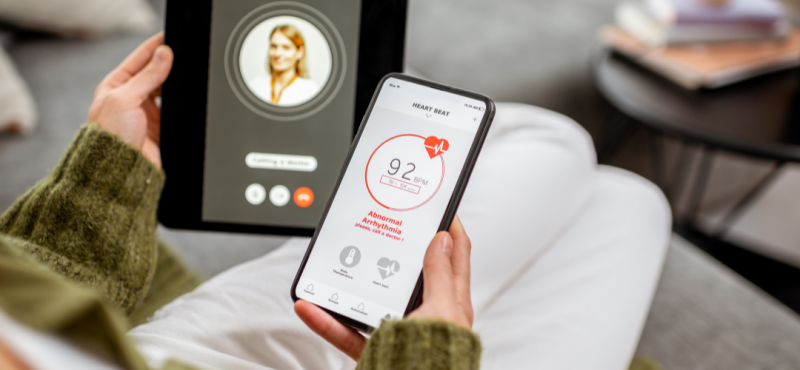In the midst of a global pandemic, the hospital is a place many Americans are trying to avoid. But while the COVID-19 crisis has many of us staying home to avoid contagion, that does not mean our other illnesses and conditions have gone away. And that’s why there’s been a recent surge in telehealth: the use of technology such as videoconferencing, the internet, store-and-forward imaging, and streaming media to support distance healthcare and health education.
In a recent survey, 59% of respondents reported that they are more likely to use telehealth services now, while 36% would even consider switching physicians in order to have access to virtual care. While telehealth cannot substitute for procedures in which a doctor’s presence is required, it can be useful for a myriad of less-critical treatments – while keeping both patients and medical personnel safe from exposure to COVID-19. And thankfully, with a broadband infrastructure that is built to handle peaks in demand caused by so many of streaming from home, the surge in telehealth has not been restricted by technology. Follow along to explore six major areas where telehealth is helping Americans during the pandemic.
1. Primary Care
ClickWell Care, a technology-driven primary healthcare model, allows patients to make and have appointments, message their doctor, and access both medical records and test results via the MyHealth mobile app, empowering them in their own decision-making. But the most popular feature has proven to be the virtual wellness coaching, through which fitness trainers and nutritionists, working in tandem with a patient’s primary physician, help them meet specific health goals. Connectivity promoting integral wellness right into people’s homes – a crucial feature in a time of confinement.
2. Mental Health
Given the added stress we are all experiencing due to the global pandemic, it’s fortunate that many mental health services also can be moved online. And the demand is there. When insurance giant Blue Cross Blue Shield examined its records from February to May, 2020, data revealed that nearly 50% of all telehealth claims under COVID-19 were mental-health related. In fact, the need was so urgent that the provider increased its number of mental-health providers by more than 30% to accommodate the demand.
3. Dermatology
Skin care is an area that particularly lends itself to telehealth treatment. Here, platforms such as Zoom and Doximity are being combined with electronic health records (EHR) to treat patients in three different ways. There are virtual visits, check-ins, and “store-and-forward,” in which a patient takes a photograph of a suspicious lesion and emails it to a dermatologist, who then contacts the patient with a treatment plan. Sensibly, tele-dermatology has been approved for use with Medicare patients and in many private insurance plans.
4. Oncology
For thousands of cancer patients, COVID-19 presents a special worry due to their compromised immune systems. Thanks to a dedicated platform, the Texas Oncology practice is allowing many consultations, follow-ups, and acute-care visits to take place remotely. What is more, courses of treatment at the Austin Brain Tumor Center are being managed in part by telemedicine, allowing physicians to review and initiate plans of care; evaluate neuro-imaging; manage symptoms; and integrate care with neurosurgeons, radiation oncologists, and supportive care.
5. Cardiology
Telehealth, digital health, and wearable IoT devices such as watches and fitness trackers are on the cutting edge of cardiovascular care. The combination is effective: whereas telemedicine maintains remote contact with a healthcare professional, the wearable technologies measure key conditions such as heart rate, blood pressure, weight, and blood sugar (the Apple watch can even perform electrocardiograms!). In essence, broadband is allowing not only consultations but key monitoring features to take place, detecting conditions before they become emergencies and, in the best of cases, saving lives.
6. Eldercare
The pandemic has exposed cracks in the healthcare system, especially for seniors in assisted living facilities where the viral outbreak has been most severe. But telehealth is being seen as a new way to deliver homecare while keeping seniors safe from contagion. There is a strong “need to reimagine elder care services in a way that employs telehealth systems to help patients at home,” says Roger Noyes, director of communications for the Home Care Association of New York State. “We’re finding that telehealth is vital for reducing exposure in a time of crisis like this.” Noyes’ organization has received a grant to build an online senior center offering classes and discussion to help seniors stay connected and mentally active during COVID-19.
Broadband and remote connectivity are providing a lifeline in this time of pandemic, accelerating the changes that were already underway to allow everyone from general-care to critically-ill patients to attend to their healthcare needs without putting themselves and their families at even greater risk. To learn more about how broadband is helping therapists to continue to provide critical mental health care during the pandemic, read our related post here.
